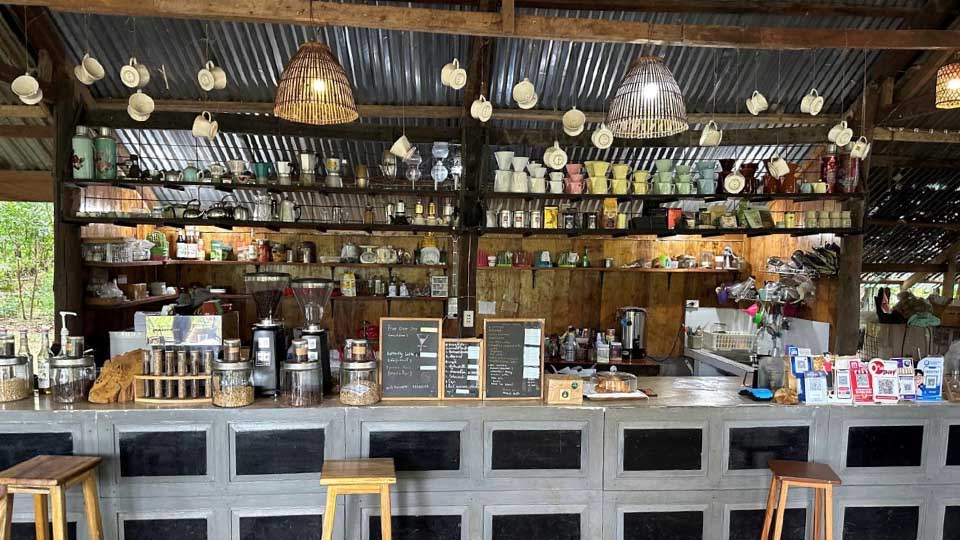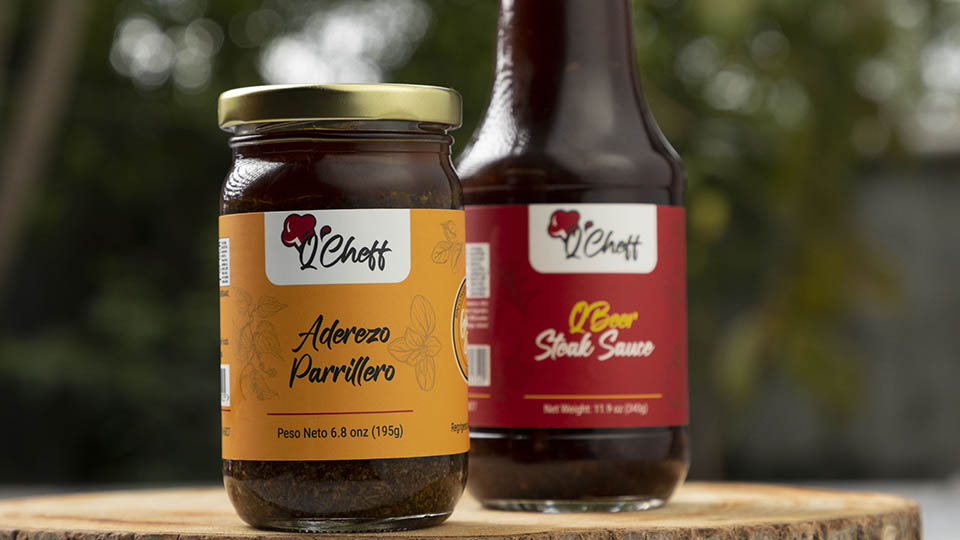Consorzio del Formaggio Parmigiano-Reggiano, Italy
The Consorzio del Formaggio Parmigiano-Reggiano (the Consorzio) is a consortium of cheese makers that was established in 1934 in the Italian Republic (Italy).Since its foundation, the Consorzio has been championing the rights and supporting the good name and heritage of its members – who comprise about 400 dairies in an area encompassing around 3,500 milk producers.
At the heart of the consortium’s concern is the iconic name of Parmigiano Reggiano, a cheese (Parmesan, in the European Union – EU). Also known as the “King of Cheeses,” Parmigiano Reggiano has a long lineage stretching back hundreds of years.With support of the Consorzio, the cheese and its makers have gained a worldwide reputation for quality. The consortium, in addition, has ensured the cheese producers’ heritage is rigorously preserved and protected and successfully developed across the world.

Goods with specific geographical origin
Parmigiano Reggiano’s global success is due in part to the specific region, which is a well-defined part of northern Italy, in which its dairy cows live and graze. The farms and dairies that produce Parmigiano Reggiano are necessarily located in five nearby areas: the provinces of Parma, Reggio Emilia, Modena, Bologna (to the left of the Reno River), and Mantova (to the right of the Po River).
Indeed, the cheese derives its name from Italian language adjectives for the historical provinces of Parma (Parmigiano) and Reggio-Emilia (Reggiano) – both being part of the Emilia-Romagna region of the country.
While many elements go into making Parmigiano Reggiano cheese, the unique geography of the region in which the animals are raised is instrumental in its creation.
Consequently, the locally produced fodder (animal feed) and climate of these areas are important and distinguishing factors that help give Parmigiano Reggiano its much liked and singular flavor.
This terroir– the degree to which a product (such as cheese) can be distinguished because of its specific geography or tradition – has been used by governments and businesses, and organizations such as the Consorzio, to promote producers and their products.
According to the Consorzio, “The secret of the goodness [in Parmigiano Reggiano cheese] originates in the place of origin, in the natural feed, and in the high quality milk with no additives.”
Traditional knowledge
An equally important aspect of Parmigiano Reggiano’s unique and distinct quality, taste and success is the producers’ traditional cow-rearing skill and methods of cheese production – their traditional knowledge.
Traceable to 1344, one of the earliest records of the word "Parmigiano" can be found in a purchasing ledger for Benedictine monks – who were experimenting with cattle breeding and cheese production in the Emilia-Romagna region.
Among the monks’ early experiments with cheese was to double-heat the milk in order to produce a pasty consistency that would be hardened into compact cheese drums. This method of production continues to be used by Consorzio members in contemporary Parmigiano Reggiano cheese-making.
Other historical references to Parmigiano Reggiano cheese-making in the region can be found in traditional Italian food recipes and famous books written centuries ago.

In The Decameron (circa 1353), a book by Italian writer Giovanni Boccaccio, there is a reference to “a whole mountain of Parmigiano cheese, all finely grated, on top of which stood people who were doing nothing but making macaroni and ravioli.”
The British writer Samuel Pepys (1633 – 1703), moreover, wrote in his celebrated diary of saving his "Parmezan cheese" during the Great Fire of London in 1666.
In part based on its illustrious history, making Parmigiano Reggiano has become a precise art, requiring skill and dedication. Only three natural ingredients are used to make the cheese: unpasteurized (raw) milk, rennet (an enzyme that allows the coagulation of the milk) and salt.
Manufactured through a mix of full fat and skimmed milk, Parmigiano Reggiano is rich in free amino acids and for this reason can be quickly digested and easily assimilated into the body. It is also rich in nutriment and contains proteins, lipids, calcium, phosphorus and low levels of fat and cholesterol compared to other cheeses.
To make one kilogram (kg) of the cheese requires 16 liters (L) of milk. 550 L of milk can make one wheel of cheese weighing more or less 40 kg and at least 30 kg.
It takes a minimum of twelve months for the aging process (20 to 24 months on average for a wheel), during which time the cheese undergoes seasoning: the process of occasional checking, turning, and scrapping the cheese.
Parmigiano Reggiano is made with zero additives and preservatives and is a 100 percent natural product. The cheese has a rich, deep flavor and occasionally crunchy texture. Enjoyed for centuries, the cheese can be grated or sliced and used as an accompaniment for various food and drink preparations or occasions.
Geographical indication
A Geographical Indication (GI) is a sign used on goods that have a specific geographical origin, where such goods possess qualities, reputation or characteristics that are essentially attributable to that place of origin.
With the GI sign, producers can distinguish their products from those of others in the market. They can also protect the good name associated with such goods and reassure customers and clients of the products’ quality.
Indeed, the Consorzio was formed due, in part, to stiff and often unfair competition from rivals that imitated or rode on the coattails of Parmigiano Reggiano’s success in the early part of the 20th century. To combat such attempts of counterfeiting while protecting a good reputation, GIs and other legal instruments have become an attractive counter strategy for many producers’ organizations, such as the Consorzio.
The consortium’s earliest effort in protecting Parmigiano Reggiano’s reputation was made in the 1950s following the ratification in the Italian town of Stresa of an International Convention on the Use of Appellations of Origin and Denominations of Cheeses (1951, the Convention).

The Convention offered legal protection for appellations of origin (AO) – a sub-set of GI that generally consists of a geographical name or traditional designation used on a product. Indeed, the Convention signatories (France, Italy, the Netherlands, and Switzerland) committed themselves to "prohibiting the use of false designations of origin on their territory."
Following the Convention, in 1955 the Consorzio relied on a new promulgation by the Italian government (Executive Order No. 1269) which stated that only cheeses produced in the Parmigiano Reggiano region that complied with certain characteristics may be labeled as such.
Moreover, the 1958 Lisbon Agreement for the Protection of Appellations of Origin and their International Registration (the Lisbon Agreement) signified yet another step forward in producers’ march towards legal protection for products.
Administered by the World Intellectual Property Organization (WIPO), the Lisbon Agreement offers protection against any "usurpation or imitation, even if the origin of the product is indicated or if the appellation is used in translated form or accompanied by terms such as kind, type, make, imitation, or the like" via a one-stop registration process. Parmigiano Reggiano was registered as an AO under the Lisbon Agreement in 1969.
Recognition for GIs was enhanced in 1994 after conclusion of the Agreement on Trade-Related Aspects of Intellectual Property Rights (TRIPS Agreement) – an international agreement that sets out minimum standards for various areas of intellectual property (IP) protections.
The Parmigiano Reggiano GI gained overall legal status in the EU in 1996 when it was in the vanguard of denominations to be classified as a protected designation of origin (PDO), a classification for GIs recognized in the EU.
The Parmigiano Reggiano PDO has specific and important requirements that consolidate a product’s distinctiveness beyond GIs and includes the requirement that the consortium’s members establish production methods that are defined in a specification.
PDOs, moreover, require not only that the product is prepared, produced and processed in the specified location, but also that the raw material for a given product originates in the area designated.
In practice, for the Consorzio, this entitles producers who are located inside the designated production region of Italy, and who comply with the conditions provided for in the relevant specification, the use of the Parmigiano Reggiano PDO and the Parmigiano Reggiano appellation and PDO indication and symbol.

Any other use of the PDO Parmigiano Reggiano, or protected names such as Parmesan, by operators for a cheese not complying with the relevant specification is prohibited.
As one cheese maker in Mantova, to the right of Po River, part of the area designated by the Parmigiano Reggiano PDO, said: “It’s important to protect the name of Parmesan because when the consumer is cheated so are we.”
In part due to PDOs, consumers are able to make informed choices between rival products based on clear knowledge of its pedigree and region of origin.
PDO designation also provides added value, competitive advantage (with producers commanding better prices in the market) and credibility to a product such as Parmigiano Reggiano cheese while securing the good name and heritage of producers.
With PDO Parmigiano Reggiano within the EU, the Consorzio, as a group of producers working with Parmigiano Reggiano cheese, is entitled to contribute to ensuring that the quality, reputation and authenticity of their products are guaranteed on the market by monitoring the use of the name in trade.
When necessary, the consortium takes action to ensure adequate legal protection of the protected designation of origin and develops information and promotional activities aimed at communicating the value-added attributes of the product to consumers.
Furthermore, the Consorzio is recognized by the Italian Ministry of Agriculture, Food and Forestry Policies for defending, safeguarding and promoting the PDO Parmigiano Reggiano.
The Consorzio historically, and still today, has been at the center of the Parmigiano Reggiano cheese dairies. When the Consorzio established a comprehensive GI strategy, it was one of the first of over 10,000 protected GIs in the world (in 2010) with an estimated market value of over US$50 billion.

Trademarks, domain names and IP management
To distinguish its cheeses from those of others while protecting its name and avoiding causing confusion between cheese products among consumers, the Consorzio relies on the IP system. In countries where GIs has not been protected through a sui generis (special) system, the Consorzio relies on the certification mark or collective mark system.
As Parmigiano Reggiano producers have been commercializing their cheeses in the United States of America (USA) market for a long time, the consortium applied for several certification marks at the United States Patent and Trademark Office (USPTO).
Some of these certification marks are Parmigiano Reggiano Consorzio Tutela (1992), Parmigiano Reggiano (as a word and a graphic representation) (1992), and Parmigiano Reggiano Extra; all registered via the USPTO.
The Consorzio has also consolidated protection of the name Parmigiano Reggiano in the EU, its biggest market, through collective marks. To this end, a few collective marks for Parmigiano Reggiano have been filed and registered at the Office for Harmonization in the Internal Market (OHIM).
Moreover, keen to consolidate the presence of the Parmigiano Reggiano brand on the Internet, the consortium has registered several domain names – www.parmigiano-reggiano.it; www.parmigiano-reggiano.com; www.parmigianoreggiano.com parmigianoreggiano.com; www.parmigiano.it; www.parmesan.it; www.parmigianoreggiano.eu; parmigiano-reggiano.cn; and www.parmigiano-reggiano.asia – across all major regions where the cheese bearing the PDO is commercialized.
Due to the international success of its cheese, the Consorzio has diversified its IP assets portfolio by choosing the most relevant brand protection strategy in a complex and international legal landscape. GIs, for instance, are protected under a wide range of concepts – depending on the legal jurisdiction under which a business or other entity is operating.
In addition to being protected via sui generis laws which recognize GIs, they can be protected via the trademark system and through other legal instruments including laws against unfair competition and consumer protection laws.

in the EU
As a result, a term that may be considered as a GI in one jurisdiction could be regarded as a generic word or phrase (and therefore not susceptible of IP protection) in a different one, according to the provisions of the TRIPS Agreement.
Legal jurisdictions such as the EU recognize and protect GIs such as Parmigiano Reggino through a sui generis system (including the name Parmesan, which has been considered an "evocation" of the PDO Parmigiano Reggiano by the Court of Justice of the EU).
Other regions and countries, including the USA, may consider "Parmesan" to be a generic term for describing hard cheeses that can be grated. In such a case, "Parmesan" may not be susceptible to protection via IP instruments.
Due to this complex international IP and legal framework, the consortium registered certification marks in the USA and trademarks in the Americas, while registering both GIs (including PDOs and AOs) and collective marks in the EU.
In addition, the Parmigiano Reggiano PDO has been recognized in countries, such as Switzerland, that have bi-lateral agreements with the EU to respect such systems. To this end, the Consorzio registered Parmigiano Reggiano as a designation of origin in the Russian Federation (2013).
With a diversified and tailored strategy of legal instruments across several markets and jurisdictions, the Consorzio has been able to manage its international expansion successfully.
IP infringement
Despite the overall global success of its IP strategy, the consortium has faced IP infringement in countries around the world. In a landmark European case in 2005, the European Commission (EC), the EU’s executive branch, following a complaint of the Consorzio, initiated proceedings against the Federal Republic of Germany (Germany).
The complaint assumed the German government to be obliged to act against producers in the country who were using the indication "Parmesan" on cheeses not complying with the specification for the PDO Parmigiano Reggiano. The German government had argued that the word "Parmesan," in Germany, referred merely to hard cheeses which can be grated and was therefore a generic term that could not be restricted for use as a GI.
The Court of Justice of the European Union (ECJ), however, decided against Germany and ruled that the terms Parmesan and Parmigiano Reggiano are not only phonetically and visually similar; they are also conceptually close (even across German and Italian languages) and evocative of each other. In its judgment, the ECJ (2008) dismissed the argument put forward by Germany and ruled that Parmesan is protected under EU law as an "evocation" of the PDO Parmigiano Reggiano.

The same principle was upheld by a German court during appeal hearings in 2010 involving a food producer based in Germany. During these hearings, the court upheld a decision that the company must cease labeling goods with terms evocative of Parmigiano Reggiano.
In response, the Consorzio’s Director, Mr. Leo Bertozzi, said “[The court’s judgment] demonstrates that true protection is possible when working tenaciously and seriously.” He continued, “The [ECJ] has stated that Parmesan can be used only to identify Parmigiano Reggiano. The name is protected and even its translations are protected.”
Having successfully defended its identity in the EU, however, the Consorzio has faced IP infringement in other legal jurisdictions. In the United Mexican States (Mexico), the consortium brought legal action against a company that had affixed on its product the Parmigiano Reggiano name and used identical or similar symbols to those registered in that country by the Consorzio. The consortium had sought a preliminary injunction and order of seizure of the infringing products.
The order and injunctions were granted not on the basis of the Parmigiano Reggiano AO, but because the Mexican company infringed the consortium’s trademarks – which were already registered in Mexico.
Indeed, the relevant Mexican IP law mandates that the trademark holder (the consortium in this case) should clearly show on a product’s packaging or wrapping (using the symbol ®, for example, which signifies a registered trademark) that it is legally protected by an IP right (IPR).
The Constitutional Court in Mexico ruled that this provision is applicable only to trademarks and patents but not to AOs. The court decided that IPRs such as trademarks and AOs are separate and distinct in nature thus requiring different registration processes.
However, the court further stated that the "adequate publicity" principle embodied in the relevant Mexican law was satisfied by Parmigiano Reggiano’s registration in WIPO’s International (Lisbon Agreement) Register and due to its publication in the WIPO Appellations of Origin bulletin. The court, in effect, upheld the Consorzio’s desire to prevent the Mexican company from commercializing imitations of Parmigiano Reggiano cheese in the country.

The consortium continues to carefully navigate a complex international IPR landscape. In the face of growing global demand for genuine Parmigiano Reggiano, the Consorzio has raised consumer awareness of its unique cheese while prosecuting and challenging any infringement of its identity.
Branding and commercialization
Having protected its good name and corporate identity, the Consorzio has been keen to establish imaginative branding and commercialization strategies. One such approach is to distinguish the cheese based on quality and added value.
Indeed, a consequence of the PDO and specification has been to increase quality at the Consorzio’s facilities – the consortium’s dairy cows and production processes, for instance, are strictly regulated by clear rules that guarantee consistent results.
The specification also ensures that every wheel of the cheese bears marks of origin applied by individual dairies and comprising a pin-dot writing of Parmigiano Reggiano on the rind of each wheel.
The dairy number, year and month of production is also indicated as well as an attachment of a casein label with the words “CFPR” (the Italian acronym for the Consorzio) and alfa-numeric codes that identify the wheel.
The wheel also bears selection marks – an oval mark with the words "Parmigiano Reggiano Consorzio Tutela," and the year of production – applied by the consortium after the selection of each wheel of cheese.
In order to differentiate between its cheeses, which vary in flavor depending on the maturation duration (between 18 months and over 30 months), the consortium created subcategories for the cheese using color-coded labels and varying price plans. This allows producers to streamline commercialization procedures while giving the customer a clear choice between products.
Red Stamp cheeses, for instance, are the consortium’s best value products and have "…matured for over 18 months, [have] a somewhat distinctive milk base, with vegetable notes such as grass, cooked vegetables and at times flowers and fruits," said the Consorzio.

One price level up, Silver Stamp cheeses have "…matured for over than 22 months, [and have a] more distinctive flavor with notes of melted butter, fresh fruit and citrus fruits as well as overtones of dried fruit," according to the consortium. "[These products, furthermore, have] a balanced, mild yet full-flavored taste, with a crumbly, grainy texture."
In addition, Gold Stamp cheeses, which are retailed at premium prices, are "matured for more than 30 months (extra-strong), [have] the highest nutritional value, [and] a drier, crumblier and grainier texture. [These products have] a strong flavor and notes redolent of spices and dried fruit prevail," the Consorzio said.
Commensurate with their price plan and color coded quality scheme, the consortium has on its website a well-illustrated cooking guide which customers can access for various tips on using Parmigiano Reggiano for dining and drinking occasions.
Apart from the quality labels, price plans and serving recipe recommendations, the Consorzio engages in media advertising campaigns including an established strategy to support the Italian national soccer team as an official sponsor.
As a result of its marketing and branding strategies, the consortium has successfully propagated the good name and traditions of its members, raised the profile of its quality cheese, and opened new opportunities for commercialization.
Business results
A combination of strategic use of IP instruments both to promote and protect its assets and a strong branding and effective commercialization regime has led to tremendous expansion for Parmigiano Reggiano and its producers.
As a mark of its national and international success, sales of Parmigiano Reggiano cheese totaled €1.5 billion (US$2.2 billion, 2007) with approximately 16 percent of it being exports.
Ever growing in quantity and quality, almost 3 million wheels of Parmigiano Reggiano cheese are produced every year. Generally, vacuum-packed cheeses account for the vast majority of the consortium’s exports (62.9 percent), followed by whole cheeses (18.7 percent), grated cheeses (15.3 percent) and cubes of cheese (3 percent).

Playing the IP cheeseboard
For over 70 years, the Consorzio has been defending the heritage, knowledge and commercial and IP assets of its members who work in a well-defined area of northern Italy. Historically an icon of Italian farming and cuisine, Parmigiano Reggiano has become a global leader. Consumers the world over, meanwhile, have been able to enjoy its ancient, unique and distinct taste.



